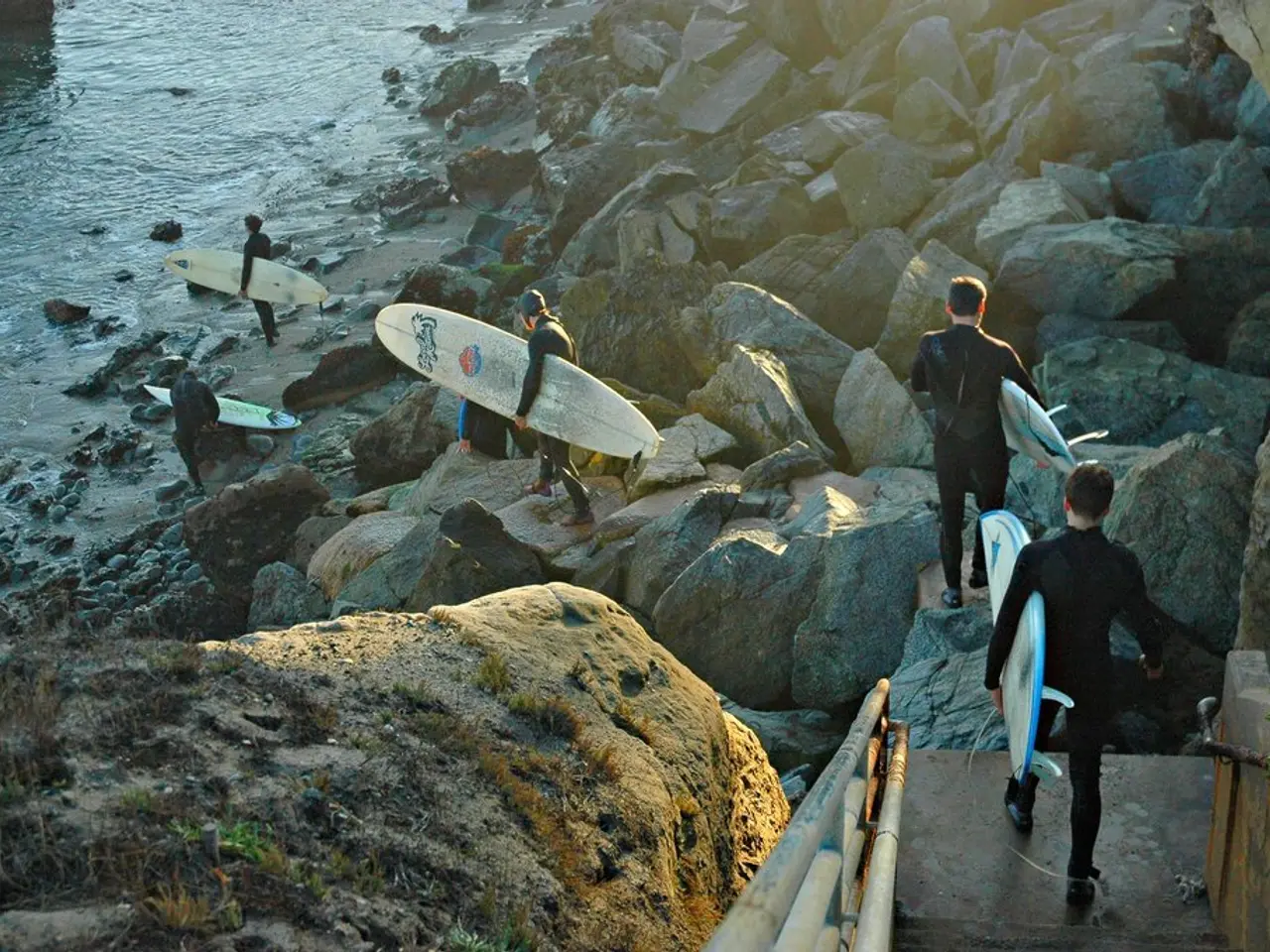Ignore a Potentially Fatal Malady that Hikers Often Confuse with Altitude Illness
In the world of outdoor adventures, hiking at high altitudes can be both exhilarating and challenging. One hidden danger that hikers may encounter is exercise-associated hyponatremia (EAH), a condition characterised by low sodium levels in the blood. This article offers essential tips to help you maintain a healthy balance of fluids and electrolytes during your next high-altitude hike.
The primary cause of EAH is overconsumption of hypotonic fluids, such as water and certain sports drinks, which can lead to a dilution of blood sodium levels. This dilution, in turn, can cause a range of symptoms, including nausea, confusion, and strange behaviour, making it crucial to understand how to prevent this condition.
To ensure a safe and enjoyable hiking experience, focus on balancing fluid intake with electrolyte replacement, particularly sodium. Here are some key guidelines:
1. **Avoid excessive fluid intake:** The major cause of serious hyponatremia is drinking more fluid than you lose through sweat. Instead of forcing large amounts of water, drink when thirsty and adjust intake to replace fluids lost through sweat.
2. **Drink to thirst and monitor fluid loss:** Tailor your hydration plan to your estimated sweat losses during the hike.
3. **Include electrolytes, especially sodium:** Water alone can dilute sodium levels in your blood. Use electrolyte tablets or drinks that contain sodium to replenish what you lose in sweat and maintain electrolyte balance.
4. **Eat regularly while hiking:** Eating snacks that contain salt and carbohydrates helps maintain sodium balance and energy, reducing the risk of hyponatremia from just drinking water without food.
5. **Be aware of altitude effects:** High altitudes may increase fluid loss through increased respiration and can affect kidney function and thirst. Hydrate carefully without overhydrating, and ensure electrolyte intake matches increased losses.
6. **Avoid unnecessary sodium supplementation:** While replacing sodium is important, current guidelines suggest that sodium supplementation during exercise is not universally recommended and should not be used as a substitute for proper fluid balance. Excess sodium intake can have other health implications.
In summary, to prevent EAH during high-altitude hiking, maintain hydration by drinking according to thirst, replace lost electrolytes with sodium-containing drinks or supplements, avoid overdrinking plain water, and consume salty snacks regularly. This balanced approach supports hydration without risking the dangerous dilution of blood sodium that leads to hyponatremia.
Remember, knowing how to prevent hyponatremia is an essential hiking safety tip, especially at high elevations where it can be a sneaky culprit. Stay hydrated, stay safe, and enjoy your adventures!
- Travel guides for avid hikers should offer advice on preventing exercise-associated hyponatremia (EAH), a condition that can occur during high-altitude hikes, particularly during exercise.
- For individuals with chronic diseases or medical-conditions, it's important to consult medical-professionals before engaging in any strenuous physical activities like hiking at high altitudes, to understand potential risks and necessary precautions.
- To enhance overall health-and-wellness, one must not only focus on physical fitness-and-exercise, but also mental-health and therapies-and-treatments, to ensure a holistic approach to self-care.
- Incorporating regular sessions of yoga, meditation, or mindfulness practices into a fitness-routine can help manage stress and improve mental-wellbeing, ensuring a balanced lifestyle.




